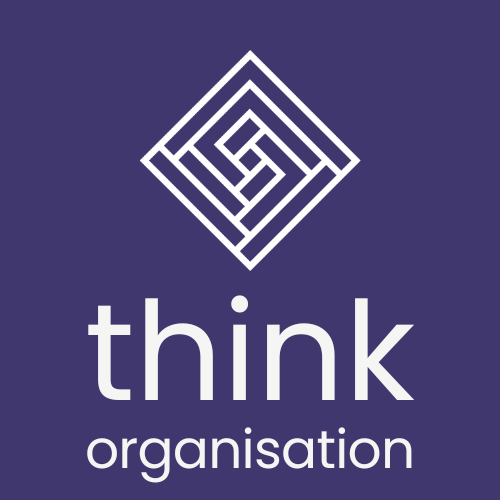At Think Organisation, we help leaders create inclusive workplaces for everyone, recognising that many groups (including women) continue to face marginalisation. We firmly believe, backed by years of evidence, that workplace culture should be fair, consistent, transparent, so that, most importantly – it is inclusive for all.
“Diversity: the art of thinking independently together.” – Malcolm Forbes
Does celebrating International Women’s Day (IWD) contribute to this journey? And what are the do’s and don’ts for organisations striving to build truly inclusive, award-winning cultures?
While IWD is intended to celebrate and advance gender equality, recent years have seen numerous well-intentioned but ultimately misguided campaigns that have undermined its purpose. The goal is to drive meaningful progress. But does anyone remember the red lips campaign from a few years ago? Or consider the image below: does it truly promote IWD in an inclusive way?
Half-dressed women with flowers . . . really?

Like the image above, there was the year when Google Doodle celebrated International Women’s Day (IWD) with flowers and soft pastels on its homepage – reinforcing traditional gender associations rather than highlighting women’s achievements or advocating for real change. While these gestures may not have been intended to trivialise the challenges women face in the workplace and beyond, they serve as prime examples of how workplace equality cannot be achieved through symbolic gifts or temporary gestures.
What should organisations be doing?
A recent case highlights the reality behind many corporate IWD celebrations. A large organisation has just lost another exemplary female employee, just months after she returned from maternity leave. Despite public claims of supporting women (and plenty of cupcakes on IWD to demonstrate their “commitment”), the reality was starkly different.
If this organisation genuinely supported IWD, then:
- It wouldn’t have required her to return to full-time work just to be eligible for her bonus (as part-time employees weren’t entitled to any bonus 😲).
- It would have been flexible in considering her request for adjusted working hours instead of hiding behind the “you only get one request per year” policy and rejecting it with “we don’t want to set a precedent.”
- It would have acknowledged her resignation, which clearly stated the reasons for leaving, and had a conversation about how they could have retained a talented employee in a way that worked for both parties.
As a result, this organisation has lost yet another highly skilled, dedicated professional due to outdated practices, rigid policies, and an inflexible working culture. What they claim to stand for is not reflected in reality, which is disheartening, especially as they are already promoting #IWD25 loudly declaring their inclusivity.
Now, let’s move beyond performative gestures and focus on the practical, science-based steps organisations must take to create genuinely inclusive workplaces.
Review Processes & Procedures
The situation above is not uncommon, and often, there is no single person to blame for communication breakdowns. Instead, multiple organisational shortcomings contribute to the loss of valuable talent. This is why regular, in-depth reviews of policies, procedures, and workplace practices are essential.
- Conduct annual 360° reviews of policies and ways of working.
- Gather honest feedback from employees, particularly those from underrepresented groups.
- Identify barriers to inclusion and act to remove them.
- Ensure end-to-end employee experiences are designed to be fair, consistent, and transparent.
Many organisations unintentionally implement processes that hinder performance and talent retention. The key is to challenge assumptions, check in with employees who may be at risk, and ensure policies align with the organisation’s stated values.
Embed Inclusion & Belonging in Organisational Values
Workplace processes, policies, and behaviours often stem from an organisation’s espoused values, which are the principles it claims to uphold. However, all too often, there is a disconnect between the values that are publicly promoted and the reality of workplace culture.
To bridge this gap, organisations must:
- Clearly define what inclusion and belonging mean in practice, beyond just words.
- Embed these principles into mission statements, policies, and leadership behaviours.
- Commit to regular reviews to ensure inclusion efforts evolve over time.
- Listen actively rather than making assumptions about employees’ needs.
True inclusion means going beyond statements and marketing campaigns because it requires ongoing action, accountability, and continuous cultural improvements.
Create Psychological Safety
Employees will only share their concerns if they feel safe to do so. If an organisation lacks psychological safety, people will stay silent, avoid speaking up, and conform to the majority view for fear of being dismissed, ridiculed, or penalised.
To foster a culture where diverse perspectives are welcomed and respected, leaders must:
- Encourage open dialogue and constructive dissent.
- Empower everyone to assume positive intent in workplace discussions.
- Build an environment where employees feel safe to voice ideas, concerns, and challenges without fear of repercussions.
Without psychological safety, employees will not feel included, valued, or able to contribute fully. To measure your perception of psychological safety in your organisation for free please click here.
Empower the Employee Voice
It takes courage for employees to speak up, and the more they trust their organisation, the more likely they are to do so. Businesses need structured and meaningful ways to gather employee feedback, such as:
- Surveys, focus groups, town halls, and 121 interviews.
- Anonymous vs identifiable feedback mechanisms – using both helps to gain deeper cultural insights.
However, the biggest issue isn’t just collecting feedback, it is acting on the feedback.
Many organisations gather input but fail to take action, which can be deeply damaging. If an organisation isn’t prepared to act on feedback, it shouldn’t ask for it. If action can’t be taken, communicate why action can’t be taken, including what has been explored as potential solutions as transparency builds trust.
Inclusive organisations ensure diverse voices are heard and that celebrations, policies, and practices genuinely reflect all employees’ experiences – not just those of the majority. Having an empowered employee voice helps prevent culture-washing, which is common in many organisations currently.
Measure, Improve & Measure Again
A truly inclusive organisation relies on both quantitative and qualitative data to track progress. Without measurement, it’s impossible to understand whether inclusion initiatives are truly making an impact.
For instance, in the example above, if the company had analysed its employee retention data, it would have noticed that the percentage of women leaving within 18 months of maternity leave was significantly higher than the average. However, because they weren’t asking the right questions, they missed this crucial warning sign.
Organisations must:
- Track progress against clear diversity and inclusion goals.
- Measure real impact rather than inflating numbers to appear successful.
- Be aware of hidden retention issues
Building a Truly Inclusive Culture
Ultimately, creating an inclusive workplace isn’t about one-off events, grand gestures, or marketing campaigns – it requires commitment, consistency, and ongoing effort.
Leaders play a crucial role in shaping workplace culture, and their values, motivations, and behaviours must actively role-model inclusion. True inclusivity means ensuring that:
- Policies, processes, and leadership behaviours align with real-world employee experiences.
- Employees feel psychologically safe, heard, and empowered to voice their needs.
- Continuous learning, feedback, and accountability drive long-term cultural change.
Celebrating International Women’s Day or any other diversity initiative should be more than a symbolic act – it should reflect an organisation’s ongoing, measurable commitment to inclusion and belonging.
It’s time to move beyond cupcakes and flowers and take meaningful action.
To review how inclusive your culture is, please reach out to [email protected].



